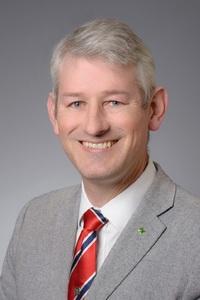Abstract
Legged robots have captured the imagination of society at large, through entertainment and through the dissemination of research findings. Yet, today's reality of what (bipedal) legged robots can do falls short of society's vision. A big part of the reason is that legged robots are viewed as surrogates for humans, able to go wherever humans can as aids or as assistants where it might also be too dangerous or risky. It is in the expectation of robustness and walking facility that today's research hits its limits, especially when the terrain has granular properties.
Performance Period: 10/01/2015 - 09/30/2019
Institution: Georgia Institute of Technology
Sponsor: National Science Foundation
Award Number: 1544857
Abstract
The automotive industry finds itself at a cross-roads. Current advances in MEMS sensor technology, the emergence of embedded control software, the rapid progress in computer technology, digital image processing, machine learning and control algorithms, along with an ever increasing investment in vehicle-to-vehicle (V2V) and vehicle-to-infrastructure (V2I) technologies, are about to revolutionize the way we use vehicles and commute in everyday life.
Performance Period: 09/15/2015 - 08/31/2019
Institution: Georgia Institute of Technology
Sponsor: National Science Foundation
Award Number: 1544814
Institution: Cornell University
Sponsor: National Science Foundation
Award Number: 1544788
Abstract
The objective of this work is to generate new fundamental science that enables the operation of cyber-physical systems through complex environments. Predicting how a system will behave in the future requires more computing power if that system is complex. Navigating through environments with many obstacles could require significant computing time, which may delay the issue of decisions that have to be made by the on-board algorithms. Fortunately, systems do not always need the most accurate model to predict their behavior.
Jonathan Sprinkle
Dr. Jonathan Sprinkle is a Professor of Computer Science at Vanderbilt University. From 2007-2021 he was with the faculty of Electrical and Computer Engineering of the University of Arizona, where he was a Distinguished Scholar and a Distinguished Associate Professor. He served as a Program Director at the National Science Foundation from 2017-2019 in the Computer and Information Science and Engineering Directorate, working with programs such as Cyber-Physical Systems, Smart & Connected Communities, and Research Experiences for Undergraduates.
Performance Period: 09/15/2015 - 08/31/2019
Institution: University of Arizona
Sponsor: National Science Foundation
Award Number: 1544395
Abstract
Security and privacy concerns in the increasingly interconnected world are receiving much attention from the research community, policymakers, and general public. However, much of the recent and on-going efforts concentrate on security of general-purpose computation and on privacy in communication and social interactions. The advent of cyber-physical systems (e.g., safety-critical IoT), which aim at tight integration between distributed computational intelligence, communication networks, physical world, and human actors, opens new horizons for intelligent systems with advanced capabilities.
Performance Period: 09/01/2015 - 08/31/2018
Institution: University of Michigan Ann Arbor
Sponsor: National Science Foundation
Award Number: 1505785
Abstract
In the United States, there is still a great disparity in medical care and most profoundly for emergency care, where limited facilities and remote location play a central role. Based on the Wessels Living History Farm report, the doctor to patient ratio in the United States is 30 to 10,000 in large metropolitan areas, only 5 to 10,000 in most rural areas; and the highest death rates are often found in the most rural counties. For emergency patient care, time to definitive treatment is critical. However, deciding the most effective care for an acute patient requires knowledge and experience.
Lui Sha
http://publish.illinois.edu/cpsintegrationlab/people/lui-sha/
Performance Period: 09/15/2015 - 08/31/2019
Institution: University of Illinois at Urbana-Champaign
Sponsor: National Science Foundation
Award Number: 1545002
Abstract
The objective of this work is to generate new fundamental science that enables the operation of cyber-physical systems through complex environments. Predicting how a system will behave in the future requires more computing power if that system is complex. Navigating through environments with many obstacles could require significant computing time, which may delay the issue of decisions that have to be made by the on-board algorithms. Fortunately, systems do not always need the most accurate model to predict their behavior.
Performance Period: 09/15/2015 - 08/31/2019
Institution: University of California-Santa Cruz
Sponsor: National Science Foundation
Award Number: 1544396
Abstract
Cells, to carry out many important functions, employ an elaborate transport network with bio-molecular components forming roadways as well as vehicles. The transport is achieved with remarkable robustness under a very uncertain environment. The main goal of this proposal is to understand how biology achieves such functionality and leveraging the knowledge toward realizing effective engineered transport mechanisms for micron sized cargo.
Performance Period: 09/15/2015 - 08/31/2019
Institution: University of Illinois at Urbana-Champaign
Sponsor: National Science Foundation
Award Number: 1544635
Abstract
Additive Manufacturing holds the promise of revolutionizing manufacturing. One important trend is the emergence of cyber additive manufacturing communities for innovative design and fabrication. However, due to variations in materials and processes, design and computational algorithms currently have limited adaptability and scalability across different additive manufacturing systems.
Performance Period: 09/01/2015 - 08/31/2019
Institution: Purdue University
Sponsor: National Science Foundation
Award Number: 1544841
Abstract
Strategic decision-making for physical-world infrastructures is rapidly transitioning toward a pervasively cyber-enabled paradigm, in which human stakeholders and automation leverage the cyber-infrastructure at large (including on-line data sources, cloud computing, and handheld devices). This changing paradigm is leading to tight coupling of the cyber- infrastructure with multiple physical- world infrastructures, including air transportation and electric power systems.
Performance Period: 09/15/2015 - 08/31/2019
Institution: Washington State University
Sponsor: National Science Foundation
Award Number: 1545104





